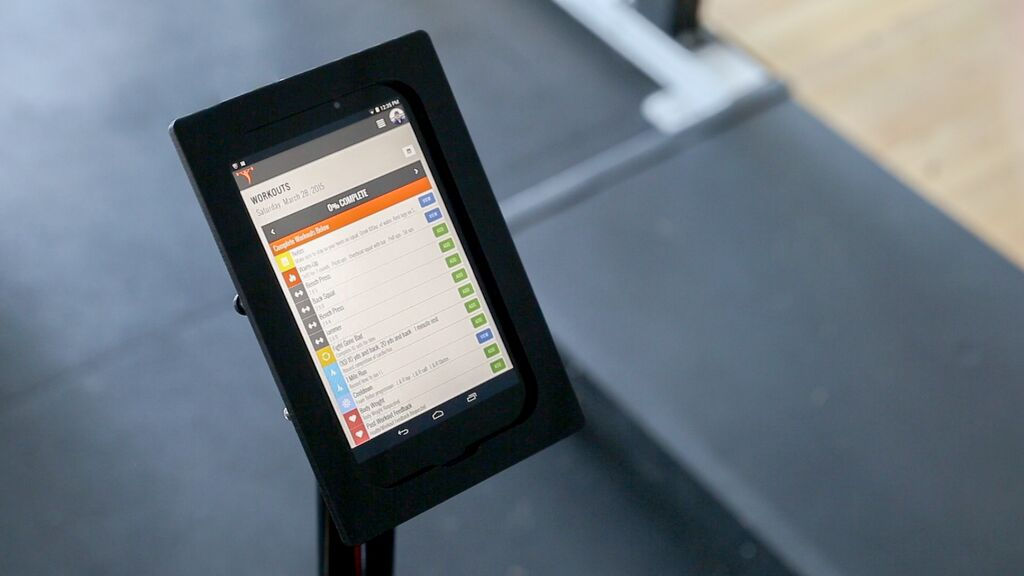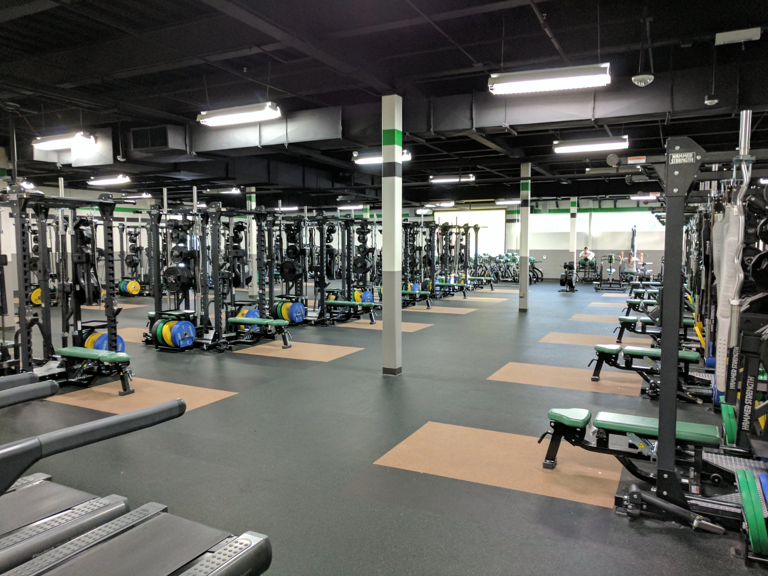As an S&C coach running an online business can seem quite daunting. The struggle of building a business involves taxes, filing an LLC correctly, marketing, sales, etc. However, I find most coaches struggle with one area above all else….scaling. Scaling your online fitness business from zero to $3,000 in gross monthly profits is an ambitious yet attainable goal, but most coaches in this field will run into many issues. Building upon foundational strategies from my previous article, let's explore more scaling tactics to accelerate your business growth. Each will fall under three different categories.
- Creating dynamic pricing
- Offering tiered packages
- Attending better conferences
Implement Dynamic Pricing Strategies:
Dynamic pricing means adjusting your service rates based on demand and timing. For example, offering lower prices for slower periods can help encourage bookings. A great example would be lowering your prices at the start of the new year to appeal to any New Year’s resolutioners. This approach not only maximizes revenue but also balances client load across your schedule. Check the example below:
Example:
Original price: 100 USD per month
NY 2025 Price: 80 USD per month
Due to the time of year and the volume of New Year’s resolutioners, it may seem like a short-term profit loss, but it will also allow the customer to experience your online services with a lower barrier to entry. This, in turn, will make the sale easier, which will increase the likelihood of client acquisition and long-term retention.
Yes, you take a slight hit on profits upfront, but let’s look at the bigger picture.
If you typically acquire one new client per month at $100, your acquisition revenue is $100. However, by offering a temporary discount of $80, you may attract three new clients instead. That brings your acquisition revenue to $240, a 140% increase.
Now, if you run the discount for just one month and those three clients continue at the standard $100 rate the following month, your revenue jumps to $300 more than usual. Over time, this strategy not only boosts short-term sales but also increases long-term retention and profitability.
$100 x 12 months (assuming 1 new client a month is gained while each client stays on) = $1,200 in new revenue generated from new client acquisition
But…..
3x$80 = 240 (for the monthly special)
+ 100 x3 x 11 months $3,540 extra per year in new client acquisition alone.
The best part is that this does not even include the month-to-month subscription charges you will get for all your other clients and these new clients that are added in.
Offer Tiered Packages or Other Packages Outside Coaching
Designing tiered membership packages allows you to reach a wider audience by offering options that fit different needs and budgets. For example:
- Basic Package – Limited access to you as a coach, or a simple resource like a PDF or e-book.
- Standard Package – Additional features such as group coaching or video breakdowns.
- Premium Package – Full access with personalized coaching and tailored programming.
This structure encourages clients to choose a plan that suits them while providing opportunities for upselling as their commitment grows. Now, I love to use this when programming for other coaches or teams that do not want/cannot afford an S&C coach in person. Is it the best option for the team? Probably not, however, in this world, most organizations cannot afford an in-person S&C coach. However, this does not mean that these teams and organizations do not need remote coaching or programming.
Here are some package structures I’ve successfully offered to organizations and teams:
Team Programming Packages
- $500/month per team, with a $100 discount for each additional team.
- 1 team = $500
- 2 teams = $900
- 3 teams = $1,200, etc.
Corporate Wellness Programs
- $500–$2,000/month per organization for wellness programming and group coaching.
Retainer Fee Structure for Ongoing Revenue
- Once a project is complete, offer a monthly retainer for continued access to your expertise.
- Example: A company hires you for $2,000/month over four months to build out a corporate wellness program.
- After completion, they can retain your services for $200–$400/month, giving them ongoing access for questions, updates, and smaller projects that don’t require a full rebuild.
Consulting, Presentations, & Speaking Fees
- $500–$3,000+ for consulting, presentations, or process development.
- Charge higher rates for premium clients—your time, expertise, and strategic insights are just as valuable (if not more) than the programming itself.
Big-name clients = Bigger price tags—don’t undervalue yourself!
Conferences Within High-Level Industries
Growing up in an upper-middle-class household, I learned some key lessons that the strength and conditioning (S&C) profession still grapples with today. One of the biggest challenges we face is a limited understanding of business compared to industries like banking, tech, defense, law, and others. Unfortunately, many in our field find themselves stuck in a "rat race downward," competing in a space that doesn’t offer the same scalability or financial rewards as those in larger industries. Two key issues stand out to me personally.
Lack of Adjacent Industries
One of the main struggles is that S&C has very few adjacent industries we can easily move into. Business development professionals often shift between industries like tech, AI, sales, and medical fields because their skill sets are transferable and scale well. These industries offer greater financial rewards and allow professionals to thrive. Unfortunately, for S&C coaches, our closest adjacent industries—athletic training, physical therapy, and smaller tech groups focused on sports apps or science—aren’t close to being billion-dollar sectors that scale as well.
Perception and Market Value
Another issue is how we’re perceived. Performance and fitness are often seen as luxury add-ons rather than essential aspects of athletic organizations. Even after more than 50 years in the field, S&C coaches are still not valued by the market in the same way as head coaches, athletic directors, or sports doctors. This disconnect between what we provide and how we're valued is a huge challenge we need to overcome.
Now that you have read the above, let’s decide what actionable steps you can take to increase your profits:
Please, for the love of God, start going to conferences where people actually have money:
Don’t waste time fishing in a pond with few fish. If you’re only attending S&C or sports-related conferences, you're limiting your opportunities. Instead, look at industries like sales, tech, or corporate wellness. These conferences often have attendees with bigger budgets and a broader range of needs, including wellness programs, consulting, and high-level training. It’s easier to sell services when the audience has the resources to invest. Get better at networking with other professions outside coaching:
Let’s face it—strength coaches, as a whole, are not great at networking outside of our bubble. We tend to focus too much on the X’s and O’s of programming or job opportunities. What I’ve noticed is that many coaches can be dismissive of those from smaller programs or non-Power 5 schools. This narrow-minded approach limits our potential connections. Instead, consider the power of networking with professionals from other industries. Look for ways to add value—whether it’s consulting with tech start-ups on training applications, offering wellness programming to small businesses, or partnering with continuing education companies to write articles or books. What value can you provide to other people?
Can you consult with tech start-ups on how to develop a better approach to training applications?
Can you offer programming to a smaller bank in need of corporate wellness?
Can you partner with CEU companies to publish books or write blogs?
The world is your oyster, and cash is all around us. Try to bring S&C programming or exercise physiology to a place where it can be valued at a price tag that is better than the current state of our athletic departments.
Conclusion:
As strength and conditioning coaches, it is time for our own to look beyond programming and coaching. If we keep focusing on these two points alone, over 90 percent of us are setting ourselves up for financial ruin. Last year, I did more on the side than I did in my first year of coaching, and I am not proud of it one bit. Please use the above strategies to scale your side business and make the extra money needed to survive through the post-COVID inflation. When I talk to other business professionals around the world, they laugh at how little we make in comparison. Last year, between my tactical contract I’m on and on the side, I generated over 106k in total gross revenue for the year. I worked only 45-55 hours a week with everything given. IT IS POSSIBLE.
Please take building a side income seriously, build your finances, and expand your horizons beyond the S&C field. Please feel free to shoot me an email at CoachKostaTelegadas@Gmail.com or DM me on Instagram @Coach_Telegadas. Now go out there, dominate the field, and make some money.
Subscribe to our blog
Subscribe to receive the latest blog posts to your inbox every week.
Related posts

Roadmap to Becoming a High School Strength Coach

Real-Time Programming for Coaches: What you need to know


